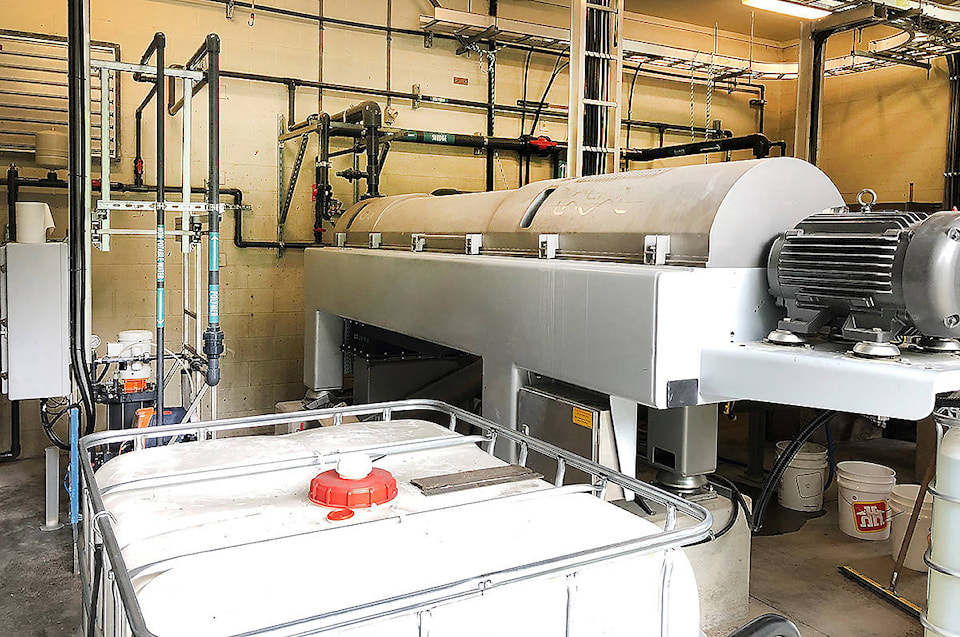Mayor Maja Tait says new funding for the wastewater treatment plant announced last week by the province won’t solve all the long-standing water infrastructure problems in Sooke, but it’s an important first step.
The province announced $4.6 million in funding for the $6.58-million project, with the District of Sooke providing the remainder.
The wastewater treatment plant will receive structural and mechanical upgrades, and the local wastewater collection system will be extended to increase sewer capacity. The enhancements will allow Sooke and T’Sou-ke Nation to accommodate future residential and commercial growth while improving water quality in the Sooke Basin.
ALSO READ: CRD putting finishing touches on five-year wastewater project
The Sooke wastewater system was commissioned in 2005. The system services a core area of approximately 5,500 homes, but more capacity is needed due to growth.
The upgrades will see capacity jump to 4,500 metres a day from 3,000 in dry weather and 10,000 cubic metres in wet weather. The system uses secondary sewage treatment, which removes more than 95 per cent of the suspended solids and high levels of other contaminants.
“Our goal is to improve the environment and the overall health of the Sooke Basin,” Tait said, with the long-term goal of getting as many people as possible connected to the sewer system.
‘This is an important first step.”
For years, the Sooke basin and harbour’s environmental health has raised concerns as the water quality continues to deteriorate.
The T’Sou-ke Nation traditionally used to harvest shellfish in the Sooke marine areas. Still, the area has been closed to harvesting for years due to high fecal coliforms and enterococci.
When the wastewater plant began operation, there was a significant improvement to the marine areas in Sooke’s core area. However, contaminants were still found in the Kaltasin and Whiffin Spit areas, where homes remain on septic tanks.
“Now it’s the case if the goal is to improve the quality of water – what do we need to do?” Tait said.
But the wastewater treatment plant is only part of the solution if the goal is to clean up the basin and harbour.
“What does stewardship of the harbour and basin look like? How do we discourage dumping in the water? How do we get boats to go to proper disposal points; how to work with the feds to do more monitoring? All these pieces need to shift to get to this goal,” Tait said.
Municipal Affairs Minister Josie Osborne said the upgrades to the wastewater treatment plant align with the province’s CleanBC goals, make way for future community growth and help the district and preserve the local environment for years to come.
T’Sou-ke Nation Chief Gordon Planes expects the upgrades will end septic tanks on the First Nation reserve and open the door to more economic growth.
“This project reflects our commitment to preserving our ecosystems and fostering sustainable economic growth that will ensure that future generations can enjoy our beautiful waterways and coastlines for many years in the future,” he said.
The buildout of the project will take up to two years to complete.
This fall, the district will begin developing its wastewater master planning, looking at six areas that could be brought into the sewer system. Those areas include the Kaltasin area east of the Sooke River Bridge, Whiffin Spit, town centre, Henlyn Drive, North Otter Point/Burr Road and Helgesen Road.
Feasibility studies will include preliminary conceptual designs with cost estimates for the collection systems, and throughout the process, municipal staff will seek grant opportunities to offset future costs.
“We need extensive community consultation – but not yet,” said Tait, adding the district can’t go to residents until a plan is in place. That information will be provided by the wastewater master plan and official community plan.
“It’s finding that right balance about timing. We need to have a more realistic idea of what those timeframes will look like, and at some point, draw the line at how far we can go.
READ: ‘Nobody should have to wait for an ambulance’ — paramedic union president
